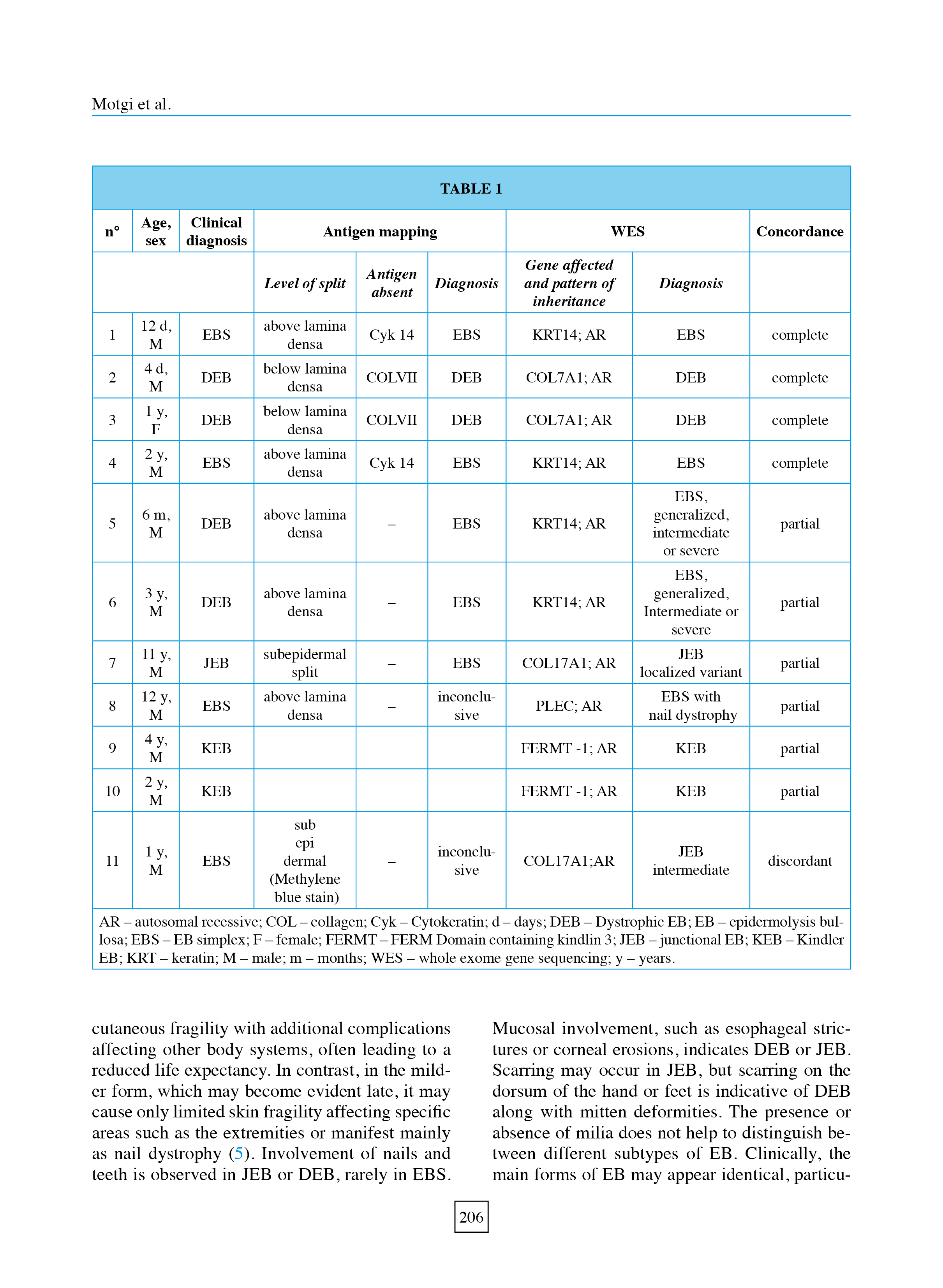Correlation between clinical, immunohistological diagnosis and whole exome sequencing analysis in epidermolysis bullosa: A case series.

Downloads
DOI:
https://doi.org/10.26326/2281-9649.34.4.2690How to Cite
Abstract
Epidermolysis bullosa (EB) is a group of rare inherited skin diseases characterized by fragility of the skin and mucosa, resulting in vesiculo-bullae following minimal trauma. The classification of EB is based on the level of cleavage, with four main subtypes: EB simplex (EBS), junctional EB (JEB), dystrophic EB (DEB), and EB Kindler. Immunohistological and/or mutational genetic analysis is essential for an accurate diagnosis. We report a series of eleven children seen over a fourteen-month period. The study involved 11 patients, consisting of 10 males and 1 female, ranging in age from 2 days to 12 years. In each case, a medical history, a detailed clinical examination, a shave biopsy sent for antigen mapping, and a blood sample for whole exome sequencing (WES) analysis were performed. Two cases of EB simplex and two cases of dystrophic EB showed complete concordance. Three EB simplex, one junctional EB and two EB Kindler showed partial concordance. However, one case of junctional EB was discordant. All patients received wound supportive care and losartan was administered to dystrophic EB cases. For a better quality of life, patients with EB require early and accurate diagnosis integrating clinical history, antigen mapping and WES analysis.
